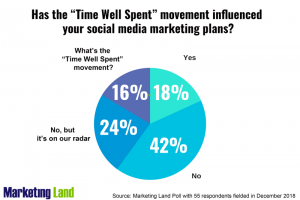Looking to build links for your local business? In this helpful how-to piece, columnist Greg Gifford outlines his process for finding and acquiring local links.

Summer conference season is in full swing, and this month I’m stepping off Greg’s Soapbox to share some in-depth knowledge. With the release of the 2017 Local Search Ranking Factors and several studies, local SEO sessions are all pushing the importance of building local links. Even when tips are shared that explain how to get great links, people always seem to come back with variations on the same question:
How do you actually build local links?
I wrote a post here on Search Engine Land last year about building local links, and I usually point people to that post to get good ideas. But recently, several people have pointed out that it shares high-level ideas, not actual tactics.
So, I decided that I should share some insight into how our team works the link-building process, with a focus on actual process and tactics. Keep in mind, we’re talking local SEO for SMBs, so we won’t have huge budgets to create amazing content pieces or huge teams and tons of time to dedicate to outreach.
Start with the basics
Before you can do anything, you’ve got to do some research. Pull your link profile from your SEO tool of choice. We use Moz, Majestic and Ahrefs, since they all pull different link data, and then we drop the exports into Excel and de-dupe the list. That will give you a much better picture of your site’s link graph.
Then, you’ll want to pull link data on your closest competitors. Look for low-hanging fruit: local sites that link to your competitors that don’t link to you. Yes, I know that we all need unique links to win, but these are typically easy links to get. The bonus is that once you have a link from the same site, it’s no longer unique for your competitor.
Don’t forget to pull links from similar businesses in other cities. Most local SEOs will only look at local competitors, but when you expand your scope and look in other cities, you’ll usually find amazing ideas you never would have considered otherwise.
Also, don’t forget to check out local directories. They’re easy to get, and many local directories can bring significant traffic to you as well.
Once you’ve knocked out the basics, you can move on to the heavy-duty stuff.
Step 1: Set your schedule
Our team works on a two- or three-month cycle, based on the time we’ve got available to dedicate to link building. If you’ve got a dedicated link-building team or a client who’s spending more money, you might be able to spend more time and shorten the cycle.
Over the years, we’ve found that setting the schedule keeps our teams more productive. If there’s no set deadline for link delivery, it’s easy to get lost in the research phase. Plus, let’s face it — building links is the hardest part of local SEO. Without a set timeline, it’s far too easy to make excuses that more research is needed, or more outreach is needed and so on.
Figure out what your schedule will be so you can keep your teams on task and produce better results for your clients. After a cycle is completed, simply start over and repeat the process.
Step 2: Research
This is the most important piece of the puzzle. You’ve already taken care of all the low-hanging fruit, so now you’ve got to flex your brain muscles and find some juicy opportunities. Many times, you can get some great links based on things your client has already done. Talk to your client and determine if there are any relationships you might be able to work to get links. Find out what your client is already doing (charity events, volunteering, local meetings) that might lead to link opportunities.
Here’s where most people want in-depth details about what to do. Honestly, experience really helps here. Knowing what’s worked in the past or specializing in a specific vertical makes it much easier to know what to do.
Looking for sponsorship opportunities?
- [city] inurl:sponsorships
- [city] inurl:sponsors
- [city] inurl:sponsor-us
Find links related to local schools:
- [city] Day care centers
- [city] Private schools
- [city] School
- [city] High School
- [city] School events
- [city] School awards
Find links related to local churches:
- [city] Churches
- [city] Church events
- [city] Church awards
Find links related to local sports:
- [city] Sports associations
- [city] Golf tournaments
- [city] Bowling leagues
- [city] Basketball tournaments
- [city] Hockey tournaments
- [city] Soccer teams
- [city] Soccer tournaments
You get the idea. Compile all of your research into a spreadsheet. You’ll want to research each opportunity to know approximate value and amount of outreach necessary. For each opportunity, you’ll need to list the name, the URL, the cost (could be cash for sponsorship dollars, time donation for community service, time for content creation and so forth), the contact person and contact details.
Step 3: Choose your targets
Once you’ve got your fully researched list of link opportunities, you’ll need to decide which ones are your targets for the current cycle. If you’re working for a client, present the opportunities to the client and help them choose, based on their budget. If you’re in-house, figure out which targets make the most sense based on your budget and the potential value of the links.
Step 4: Knock out the outreach
Take your hit list and get to work. Since your team has already researched the contact info for each link opportunity, you won’t have to waste time digging up someone’s email or phone number. You’ll have a nice, organized list with everything you need to hit the ground running.
Call, email or visit in person. Do whatever you need to do to get the links you’re going after. If you’re in the local area, many times a face-to-face visit makes it easier to lock down your link. Even if you’re not local, if your client has a relationship with the potential target, or is at least fairly well-known in the area, it’s typically easier to get the link.
Keep in mind that you’ll never get 100 percent return. Some people won’t get back to you, some will ignore you, and others might simply refuse. Stick with it and don’t give up — you’ll end up getting some great links.
Pay attention to what works. When you stumble on a gem, use it for other clients in other cities. If you find something that’s amazing but requires personal involvement from your client, explain to them why it’s important to foster a relationship with the other entity.
Rinse and repeat
Once you’ve completed your cycle, it’s time to start the process all over again. Instead of starting from scratch, you should keep your untargeted links from the last round. Just because you didn’t go after it in the previous cycle, it doesn’t mean you won’t want to in the future. Plus, sometimes it takes longer to get opportunities to reply, so you might carry a few targets from one cycle to the next.
So that’s it. Building local links isn’t really that difficult; it simply takes lots of time and effort. Hopefully, the tactical outline will help you understand how to be more efficient in your efforts so you can be more successful for your clients.
[Article on Search Engine Land.]
Some opinions expressed in this article may be those of a guest author and not necessarily Marketing Land. Staff authors are listed here.
Marketing Land – Internet Marketing News, Strategies & Tips
(52)
Report Post






